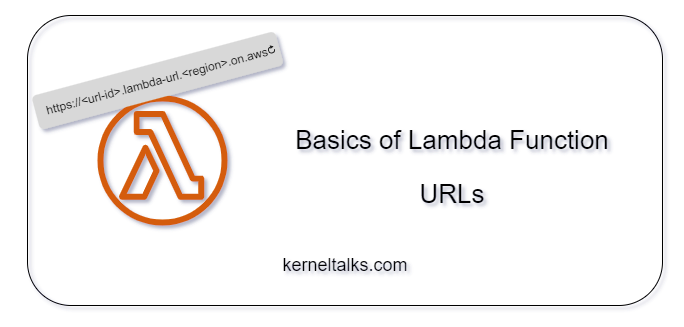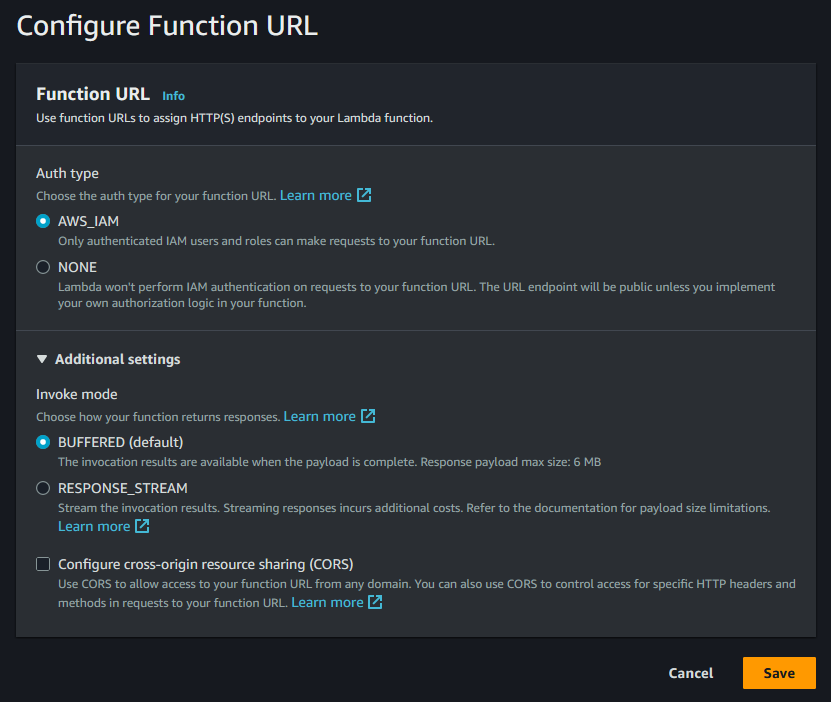In this guide, we’ll take you through the fundamental concepts of Lambda Function URLs. We’ll discuss their definition, explore their applications, and address security considerations, providing a comprehensive overview.

What is the Lambda Function URL?
It’s a dedicated, unique, and static URL for your Lambda function, enabling remote invocation of the backend Lambda function over the network call. This straightforward and budget-friendly method simplifies Lambda function invocation, bypassing the need for managing complex front-end infrastructure like API Gateway, Load Balancers, or CloudFront. However, this comes at the expense of advanced features provided by these services.
It follows the format:
https://<url-id>.lambda-url.<region>.on.aws
Why to use Lambda Fuction URL?
- Creating them is quite straightforward and simple. The
AuthType(security) is the only configuration you need to provide. CORS config is optional. - They come at no additional cost.
- Once configured, they require minimal maintenance.
- For straightforward use cases, they can replace the need for designing, managing, and incurring the costs of front-end infrastructure, such as API Gateway.
- They are most appropriate for development scenarios where you can prioritize other aspects of applications/architecture over the complexity of Lambda invocation methods.
When to use Lambda Function URLs?
Lambda Function URLs serve a valuable role in accelerating the testing and development of the application, by prioritizing Lambda invocations in the application’s progress, while the method of invocation takes a backseat.
In production, they’re practical when your design doesn’t necessitate the advanced features provided by alternative invocation methods like API Gateway or Load Balancers, etc.
These URLs are also beneficial when dealing with a limited number of Lambdas, offering a simple, cost-effective, and maintenance-free approach to invocations.
How to secure Lambda Function URLs?
You can manage access to Lambda Function URLs by specifying the AuthType, which offers two configurable options:
AWS_IAM: This allows you to define AWS entities (users or roles) that are granted access to the function URL. You need to ensure a proper resource policy is in place allowing intended entities access toAction: lambda:InvokeFunctionUrlNONE: Provides public, unauthenticated access. Use this option cautiously, as it allows unrestricted access. When you choose this option, Lambda automatically creates a resource-based policy withPrincipal: *andAction: lambda:InvokeFunctionUrland attaches to function.

It’s important to remember that Lambda’s resource-based policy is always enforced in conjunction with the selected AuthType. Please read this AWS documentation for more details.
The Lambda resource policy can be configured at Lambda > Configuration > Permissions > Resource-based policy statements.
With the basics of Lambda Function URLs in mind, refer to how to create Lambda Function URL and kick-start your journey with them!